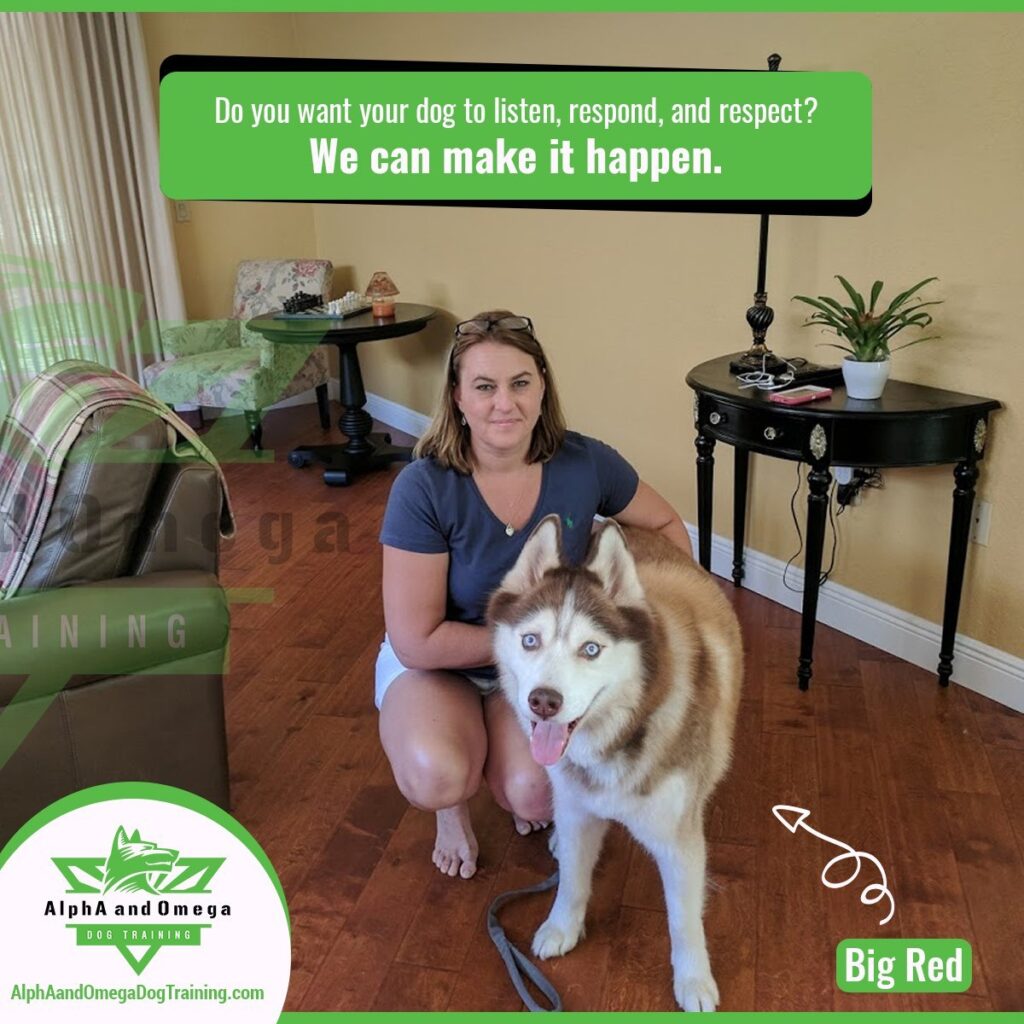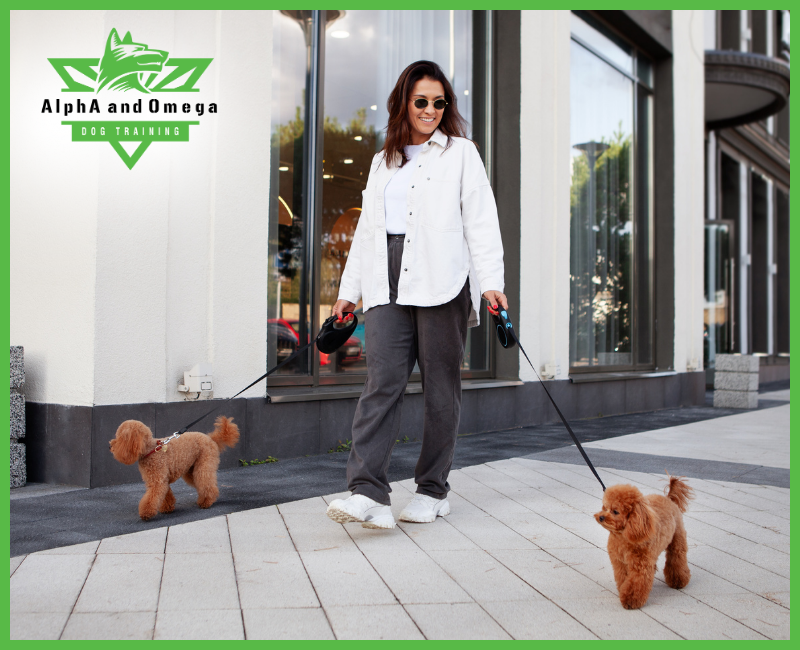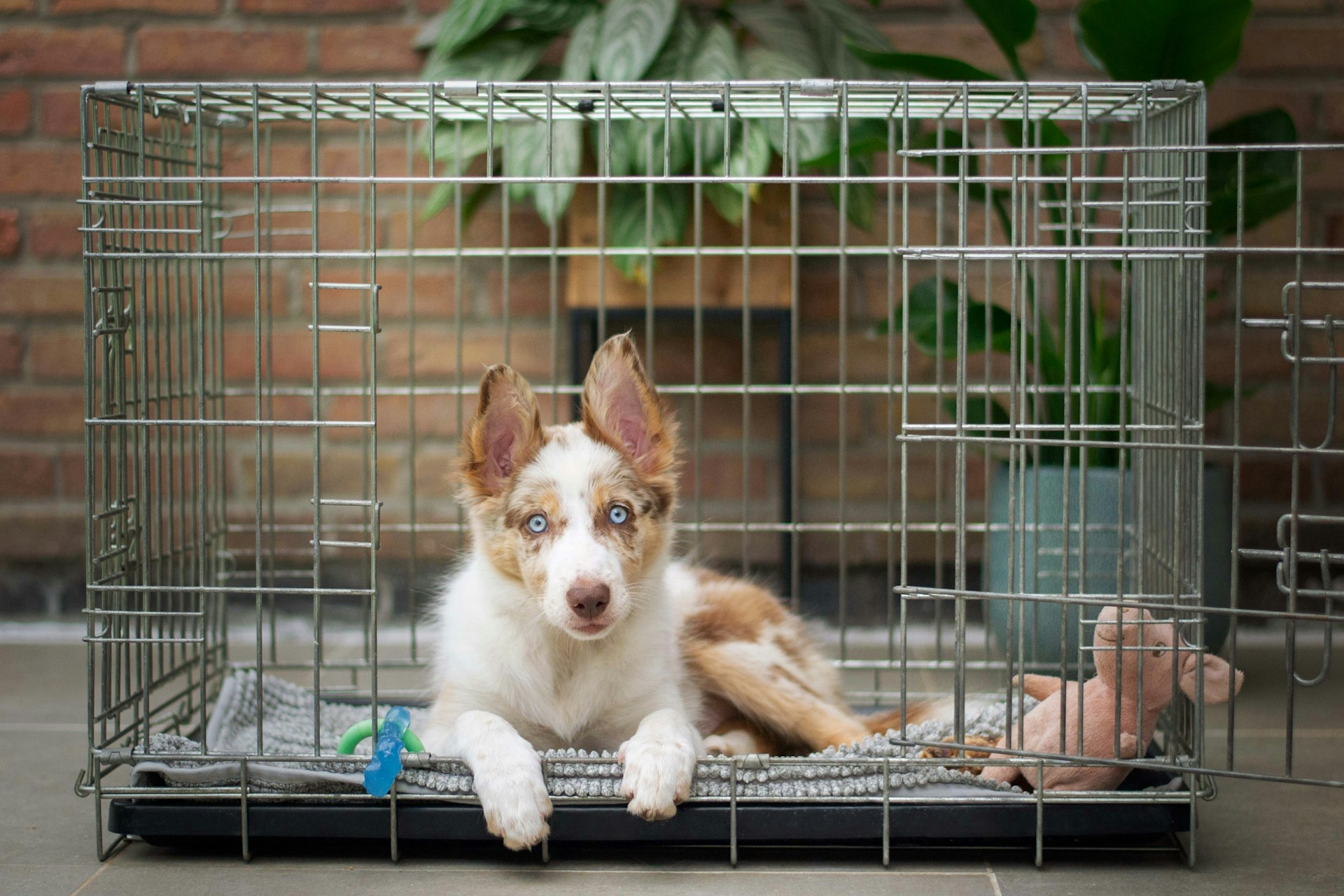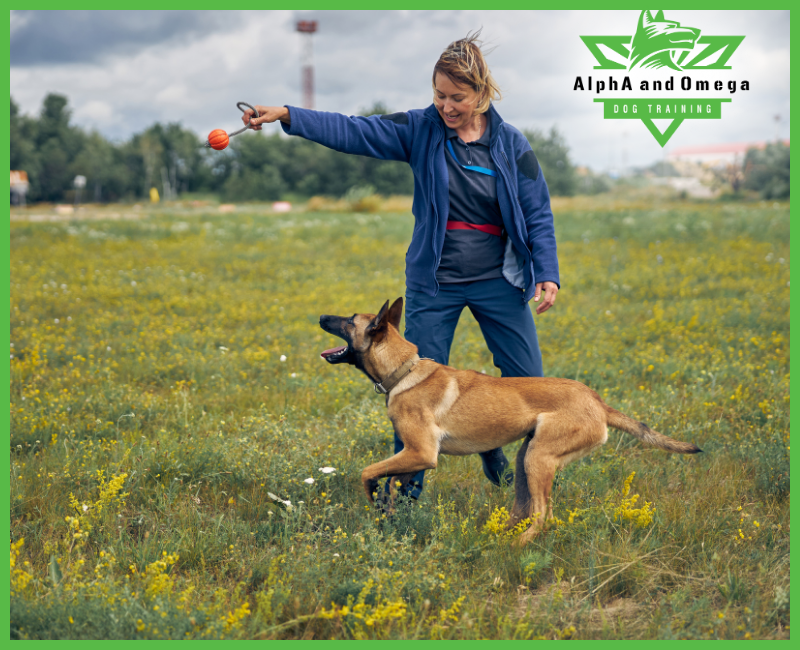
How to stop leash pulling in 5 minutes? Is your dog turning your walks into a tug-of-war? Leash pulling can be frustrating for both you and your furry friend. But with the right training techniques and patience, you can teach your dog to walk calmly beside you. This list is a pretty good one — but to really know how to make these tips work effectively, we recommend having an AlphA and Omega Dog Trainer working right next to you with your real-life distractions, and maybe even with family members so you’re all on the same page. We do that!
It’s not only against the law to let your dog off-leash in most public areas, but it can also be unsafe. Your dog could get into a scrap with another dog or run away from you. Keeping your dog leashed allows you greater control over who they interact with and what they get into. But how do you teach your dog to walk politely on a leash? Nobody wants to be dragged down the street, and with a larger dog, you can even suffer injuries if they pull hard enough.
How to Stop Leash Pulling in 5 Minutes?
Although leash pulling is a common issue for dogs, there are simple techniques to teach your dog appropriate leash behavior. Plus, adjusting your behavior during walks can make a big difference too. If you follow these 10 tips, instead of your dog walking you, soon you and your dog will be walking together.
1. Always Reward Good Leash Behavior
Never take your dog’s good behavior for granted, and that goes for walking politely on the leash as well. Dogs repeat behaviors that are rewarding, whether that reward is a treat, praise, or a chance to sniff a fire hydrant. If you only focus on what your dog is doing wrong and take good behavior for granted, chances are your pet will replace their good behavior with other less appropriate ways to get what they want.
Whenever your dog is walking politely on a leash, be sure to reinforce that with some sort of reward. Take treats with you on walks or be ready with pets and praise. Don’t be stingy. Let your dog know you appreciate the behavior they have chosen to exhibit. In the beginning, reward heavily and frequently. Then, as your dog’s skills improve, you can slowly start to reduce the treats and substitute them with the chance to sniff a tree trunk or say hello to another dog.
2. Never Let Your Dog Walk When They Are Pulling
Your dog wants to walk – that’s why they’re pulling you in the first place. So, if you let them walk while they’re pulling, you’re giving them the very reward they seek. And as dogs repeat behaviors that earn rewards, you will only make the leash pulling worse in the long run. Therefore, never walk when your dog is pulling on the leash. As soon as your dog pulls, stop, plant your feet, and wait for your dog to either return to you or loosen the tension on the leash.
3. Wait for a Loose Leash Before You Walk
If you stop walking when your dog pulls, how do you know when you can start moving again? Wait for a slack leash – it should be hanging in a J-shape – and for your dog to turn their attention back to you. It might take quite a while in the beginning, but eventually your dog will look or walk back to see what’s holding you up. At that moment, praise and reward your dog with a treat at your side, then continue the walk. You might have to stop and start every step or two at first, but your dog will soon figure out that pulling makes the walk stop and walking politely allows it to continue.
4. Incorporate Life Rewards on Your Walk
Walks should be an enriching experience for your dog. Rather than just a chance to go to the bathroom, your dog should be getting physical exercise and mental stimulation. But when you’re training your dog to not pull on the leash, it can seem like none of those things are happening. One way to boost your training while enhancing your dog’s walks is to incorporate life rewards for following the rules. Life rewards are day-to-day things your dog enjoys like the chance to sniff a shrub or greet a stranger. For example, if your dog walks 10 feet without pulling, release them to sniff for a few minutes. Bonus rewards like that will truly convince your dog that walking politely pays off.
5. Walk at a Good Pace
Most of the time, humans walk at far too leisurely a pace for dogs. Even toy breeds will get those little legs pumping faster than you might want to go. And that’s part of the reason dogs pull – they want to get moving. To help your dog feel more engaged in the walk, choose a pace that’s comfortable for both of you. Of course, you can teach your dog to match your speed, but while you’re training, a quicker pace can make it easier for them to learn not to leash pull.
6. Be Consistent With Your No-Pulling Rule
It can be tempting to let your dog pull when you’re in a hurry. Perhaps you’re late for work, or it’s freezing cold outside, and you just want to give them a chance to go to the bathroom. But you need to be consistent with your no-pulling rule regardless of the situation. Anytime you allow your dog to pull on the leash, you will set your training back to square one. Until you can get more than a few feet at a time, let your dog do their business in the yard or at the curb and save the walking for when you have time to train.
7. Keep Training Sessions Short and Fun
It can be frustrating to work with a determined leash puller. In the beginning, you might get no further than the end of your driveway. Rather than pushing your dog until you’re both feeling cranky with lack of progress, keep your training sessions short and upbeat. Puppies in particular have tiny attention spans, and asking for too much too soon is not going to get you positive results. Remember, your goal isn’t to make it a certain distance, it’s to walk with a loose leash even if that’s just to the house next door.
8. Be Interesting and Engaging on Walks
The world is an exciting place for dogs, full of new sights, sounds, and especially smells. That means there are a lot of things competing for your dog’s attention and enticing them to drag you down the sidewalk. If you’re on your phone or otherwise ignoring your dog, there’s little reason for them to pay attention to you. But if you’re interesting and worth watching, your dog will be more likely to follow your lead. Talk to your dog, take quick training breaks, stop for a game, and so on, so your dog is always waiting to see what you will do next.
9. Stay Calm
Whether it’s seeing their favorite neighbor at the end of the block or the approach of a barking dog, you can encounter a lot of emotional situations on a walk with your dog. Whether it’s exciting or frightening for your dog (and you), you need to control your emotions. Dogs are experts at reading human emotions, so your mood can transmit down the leash and impact your dog, ramping them up further or intensifying their anxiety. To keep your dog calm, stay calm yourself and show your dog there is nothing to be excited about because the more relaxed your dog is, the more likely they can listen to you and behave appropriately.
10. Engage Your Dog In Distracting Situations
When you encounter distractions like other dogs or squirrels, it’s easy for your dog to forget the rules and start leash pulling. The same is true for things your dog finds suspicious. Maybe strangers make your dog nervous. Your dog might pull to approach or pull to run in the other direction. Either way, leash manners can go out the window.
To help your dog cope with distractions, get them focused on you instead. Calmly offer them treats or play a game. For example, ask for a sit or a hand target. These exercises are simple for your dog to do and will keep them engaged as the distraction passes. You can also teach your dog to make eye contact with you using the “watch me” cue so you can control where they’re looking. But be proactive. Grab your dog’s attention before they see the distraction, and hopefully they won’t even notice it at all.
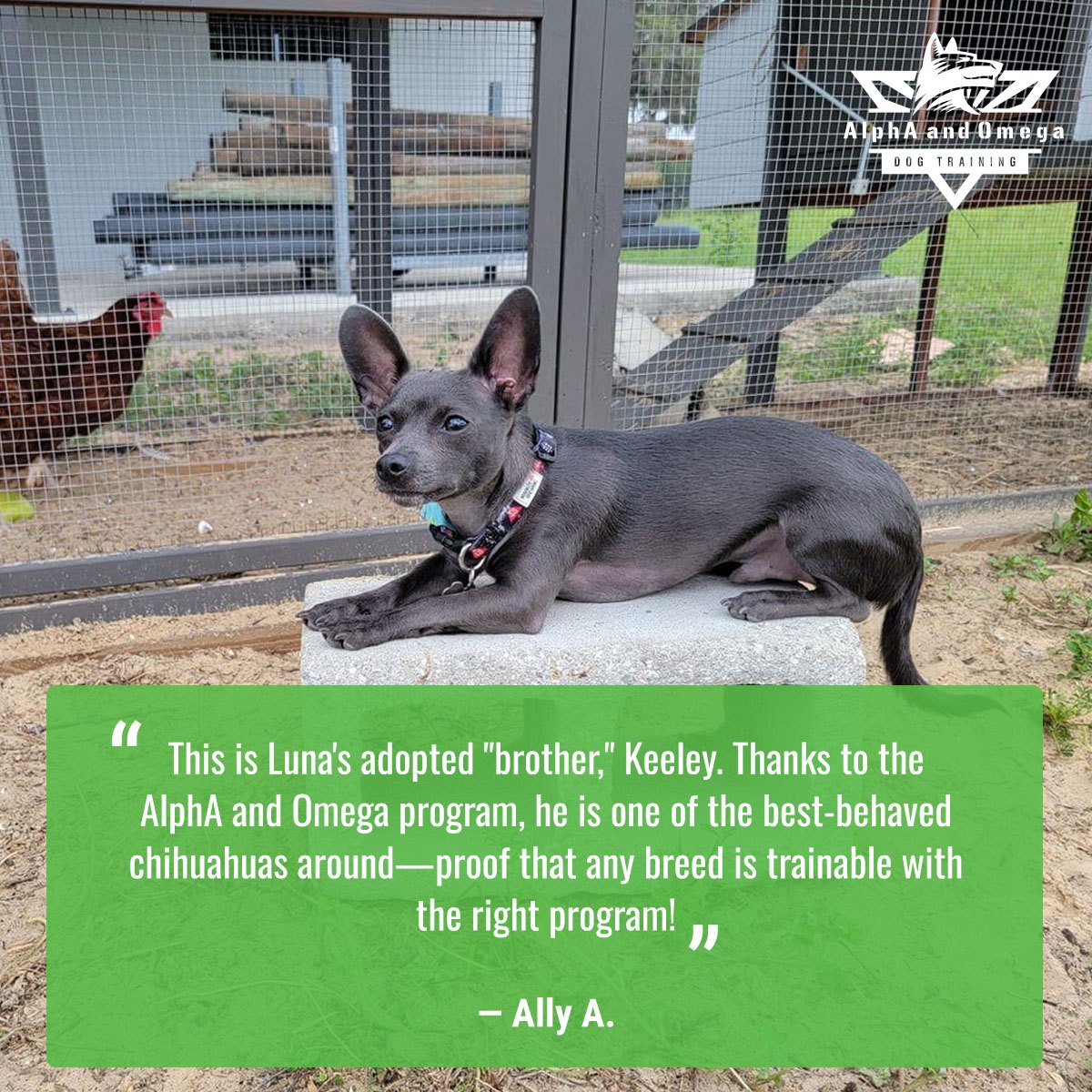
Master the leash and unlock your dog’s potential! Our expert trainers will teach you and your furry friend to walk side-by-side in harmony. Lead your pack! Contact our private dog training services today at (844) 739-0990 and click here to visit our Instagram for more tips and tricks.
Reference: [https://www.akc.org/expert-advice/training/expert-tips-dog-leash-issues/]

